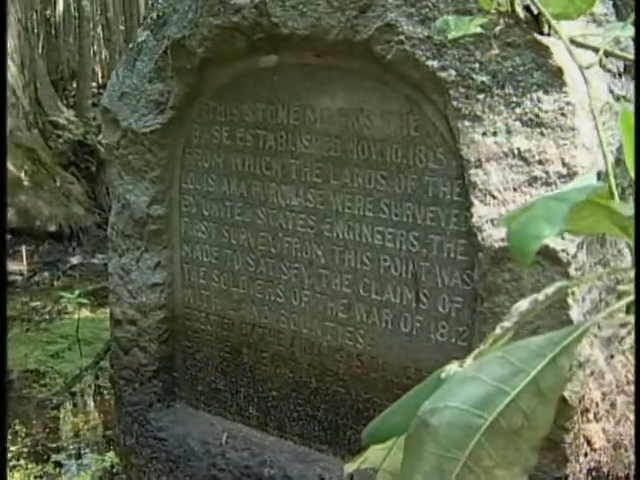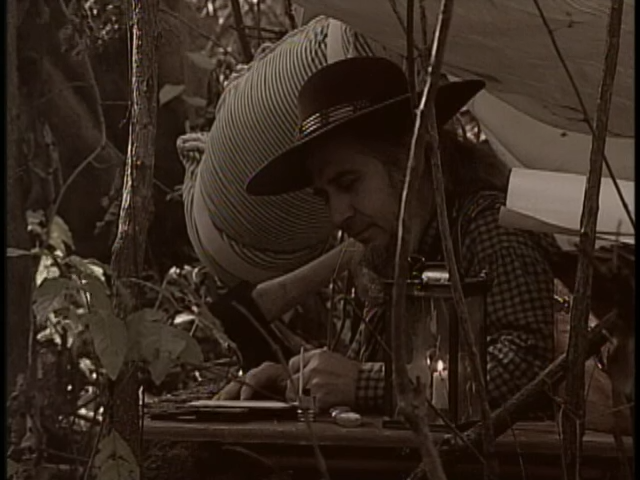Did you know Arkansas played a pivotal role after President Thomas Jefferson finalized the Louisiana Purchase from France in 1803? Jefferson bought the land “sight unseen,” but it turned out to be one of the largest land deals in history, securing about 512 million acres for $15 million. After President James Madison commissioned land surveying of the Louisiana territory in 1815, two land surveying teams met at a point in the Delta region of eastern Arkansas, establishing a point that would lead to 13 states being admitted to the Union.
The Arkansas PBS original production “It Started Here: Early Arkansas and the Louisiana Purchase” chronicles the people and land of Arkansas between the signing of the Louisiana Purchase in 1803 leading up to Arkansas statehood in 1836. “It Started Here: Early Arkansas and the Louisiana Purchase,” produced by Larry Foley, will air Thursday, Feb. 13, at 7 p.m. as part of our “From the Archives” series.

The Lost Marker
After reading published articles and interviews, Foley decided to frame the film around what happened in Arkansas between the time of the Louisiana Purchase, to Arkansas being named a territory in 1819 and into statehood in 1836.
“It turns out the survey marker for all the future states in the Purchase started in a cypress swamp in eastern Arkansas, between two rivers,” he said. “I drove across the state to the survey marker and walked around at dusk to imagine what it looked like there in early 1800, untouched by civilization.”
For more than 100 years, the survey marker in Monroe County lay hidden and forgotten underneath leaves of the same tall cypress trees where the surveyors camped. A monument erected in 1926 by the Daughters of the American Revolution recognizes an obscure footnote in American history. The monument serves as the starting point in 1815 where two federal land surveying teams met.
The History of the Survey
The War of 1812 had been won and a grateful, yet financially strapped, American government had promised its soldiers property in the new territory. Thanks to the Louisiana Purchase, the young nation had plenty of land to give away, however, none of the land had been surveyed. Until it was marked off it could not be rewarded as a bounty to the war veterans.
“The pressure was on the surveyors after the War of 1812 to get out and subdivide this land, get it marked off into blocks so that they can give the typical enlisted man a quarter section of 160 acres,” Surveyor Bill Ruck said.
Despite the federal government’s best intentions, only a few war veterans received free land. Others were not able to hold onto it. Politicians taxed the land, and property holders who could not afford the taxes lost their deeds.

Highlights and Beauty
Similar to “Dream Land: Little Rock’s West 9th Street,” Foley’s use of a re-enactment plays an integral role in the film and remains one of Foley’s favorite memories of filming.
“The morning we filmed the reenactment of the survey was a highlight,” he said. “We had historical actors meet us at dawn with authentic period equipment. The light and weather were just right, and it set the stage. Later, we filmed a group of history enthusiasts, touring the state park, which allowed us to begin and end the story at the same place.”
Foley said filming in the area not only set the stage, but he felt “It Started Here: Early Arkansas and the Louisiana Purchase” is one of his most underrated works.
“Trey Marley, my director of photography, shot some wonderful scenes at the Louisiana Purchase State Park,” he said. “Swamps and bottomland hardwood forests are colorful, and Trey captured the beauty. Trey’s photography, Carolyn Long’s narration and Jim Greeson’s original musical score are all brilliant. I am very proud of this film.”
How to Watch
“It Started Here: Early Arkansas and the Louisiana Purchase” will air Thursday, Feb. 13, at 7 p.m. as part of the “From the Archives” series.
How to Watch on Demand
“It Started Here: Early Arkansas and the Louisiana Purchase” is available on demand at youtube.com/arkansaspbs.

